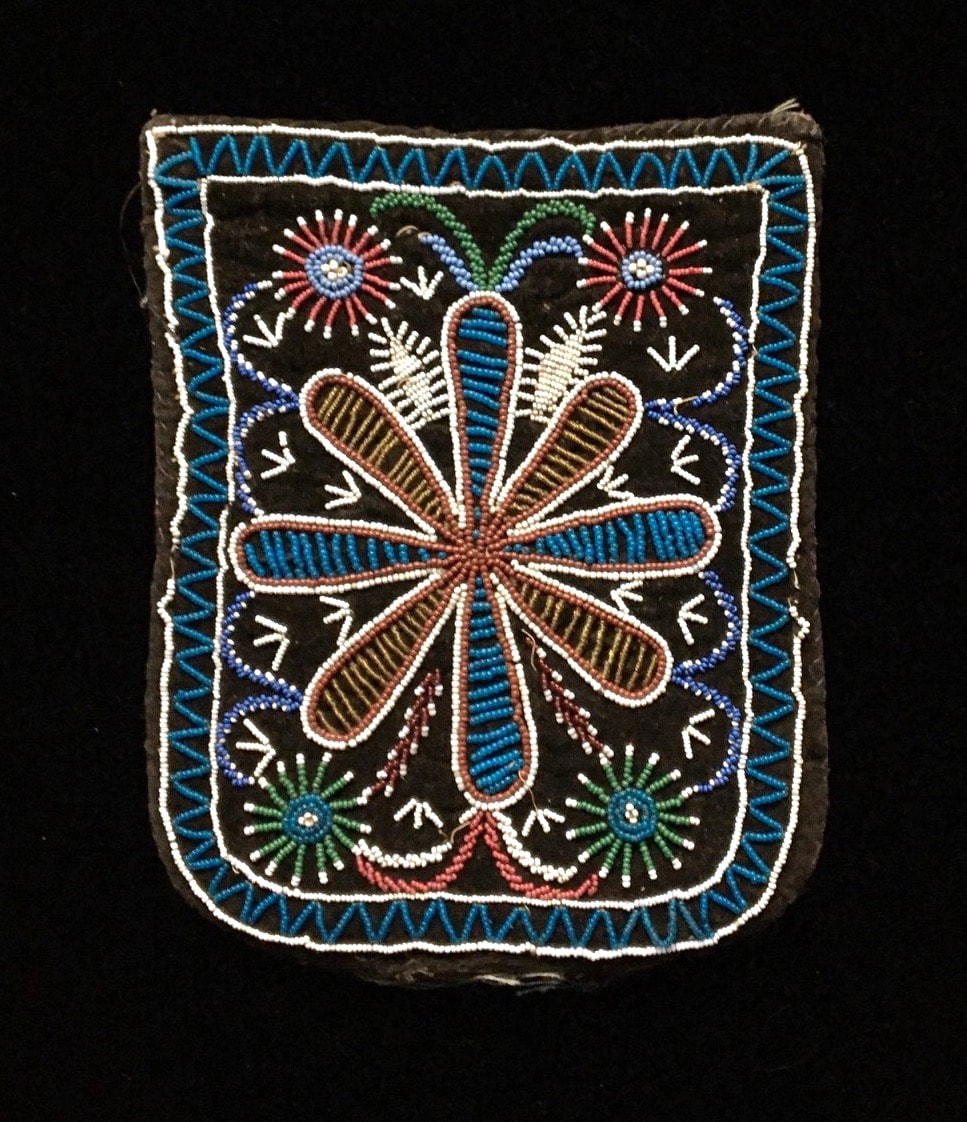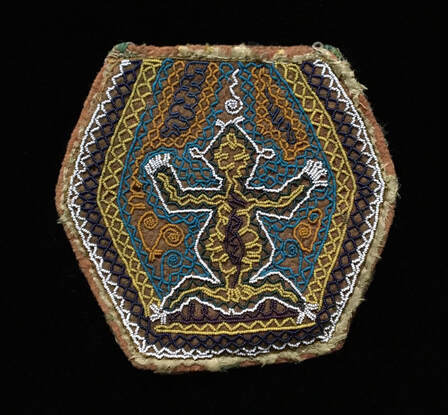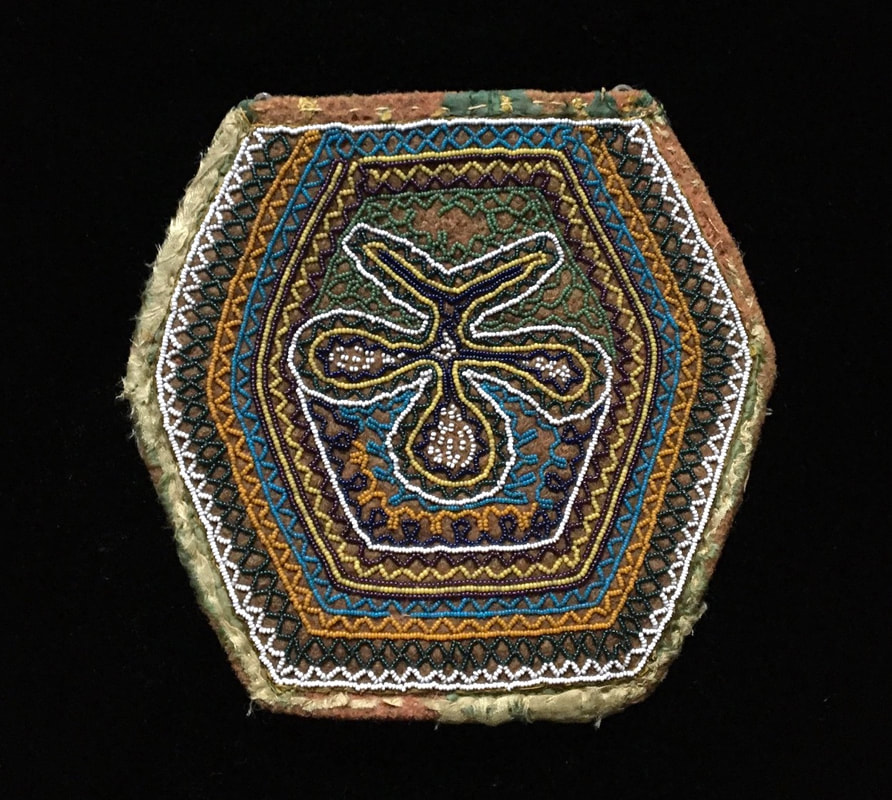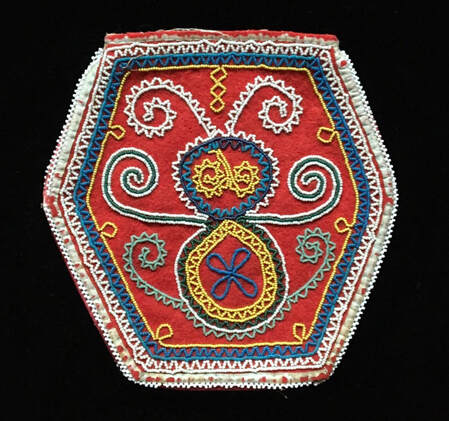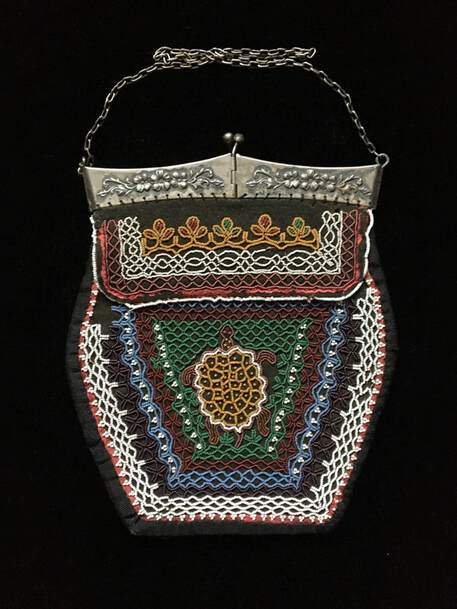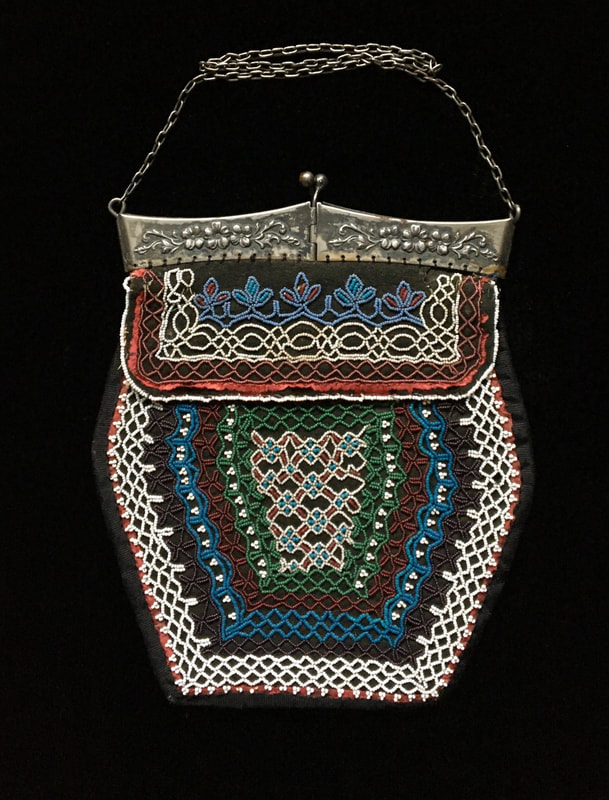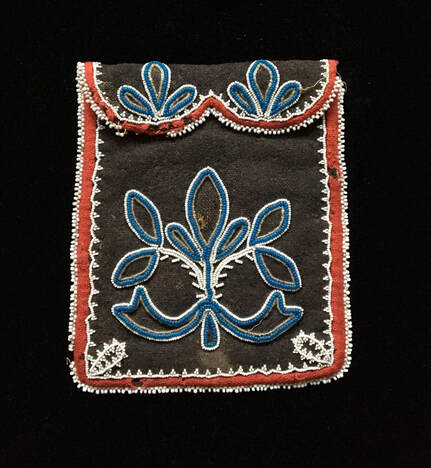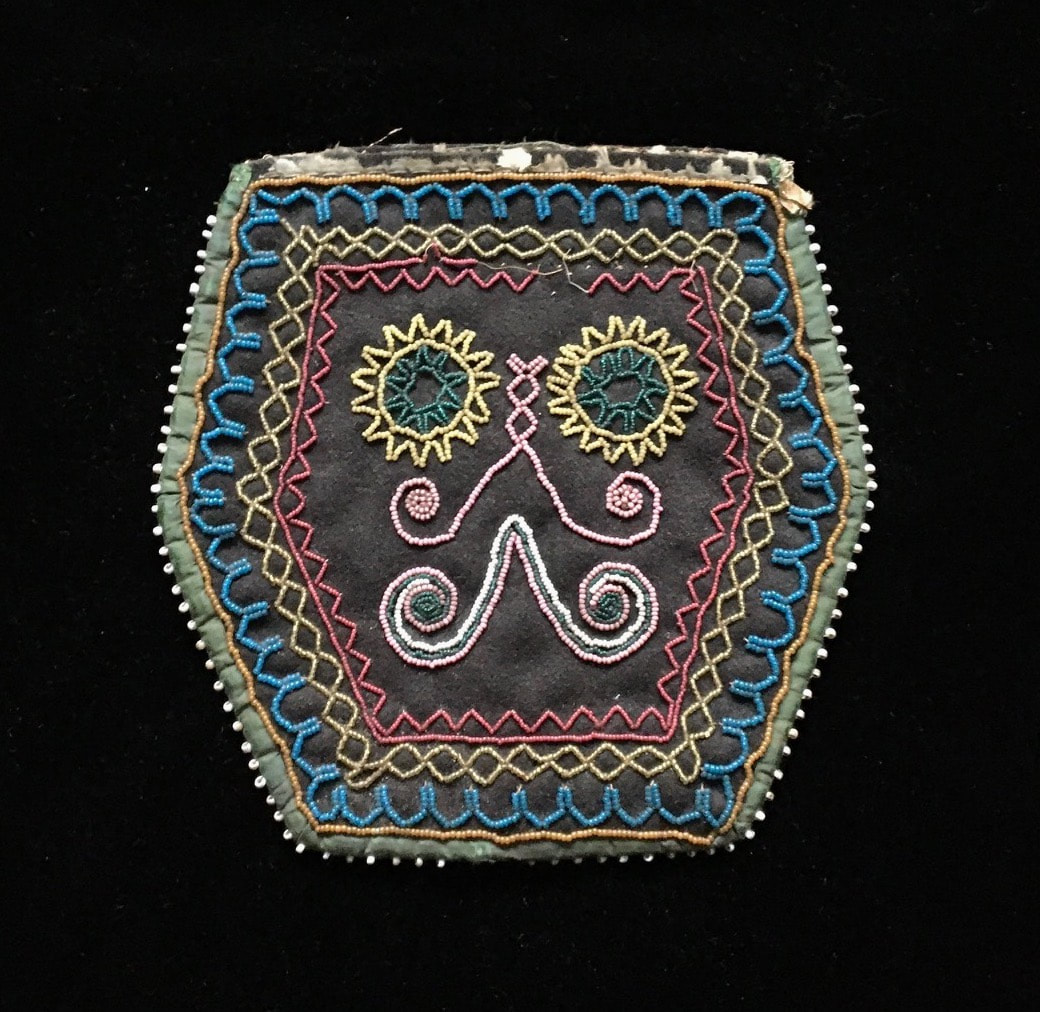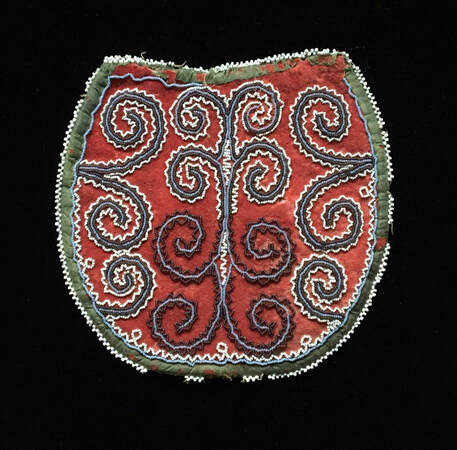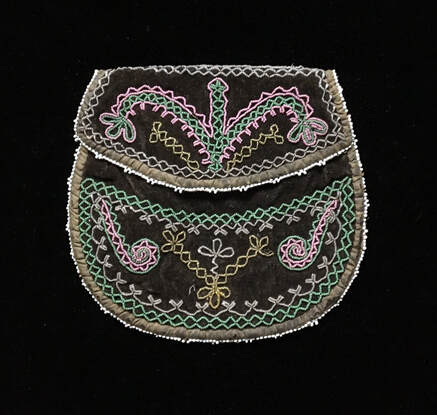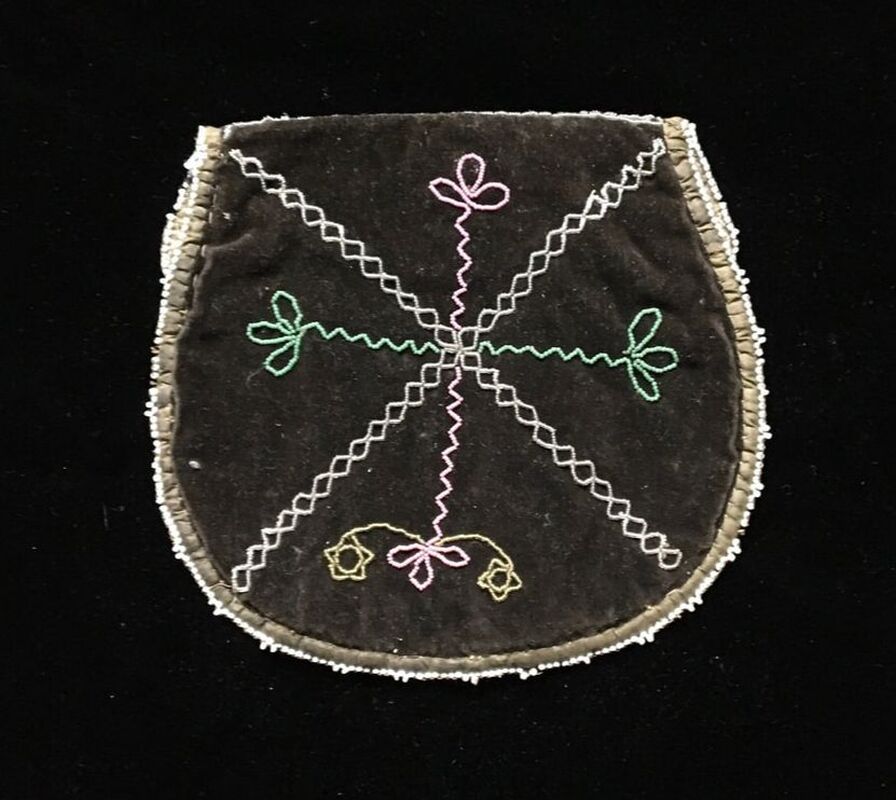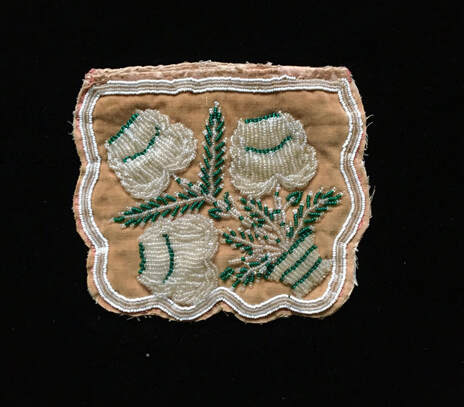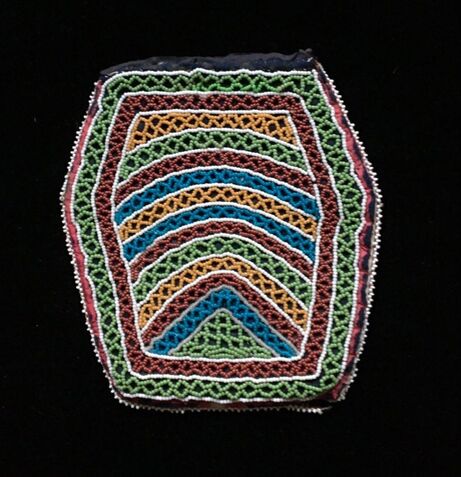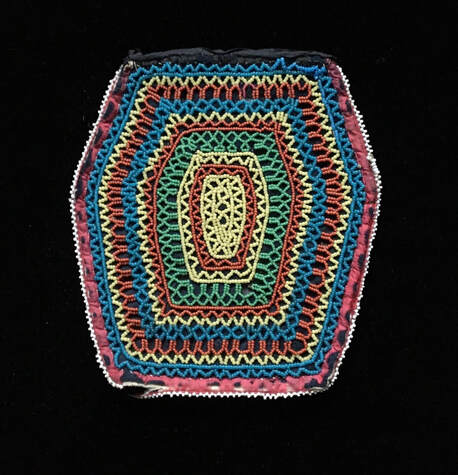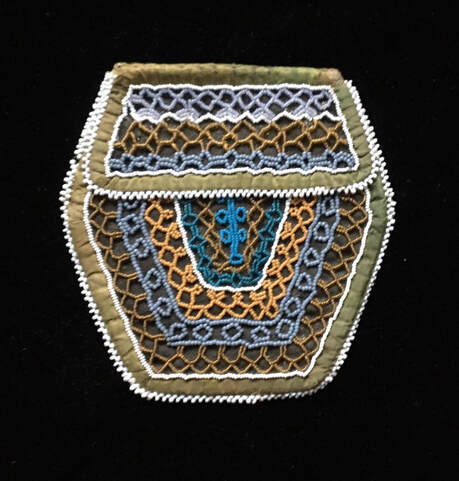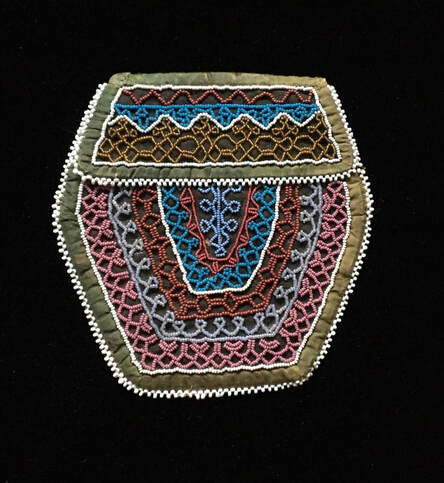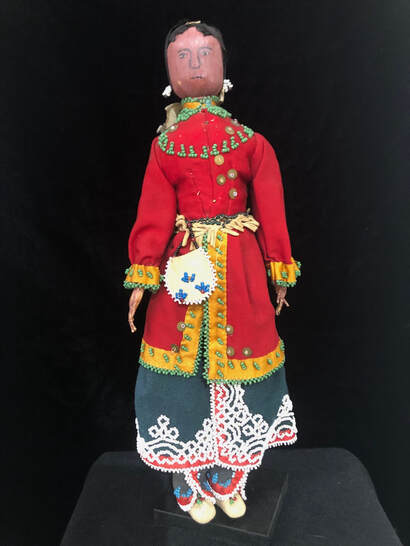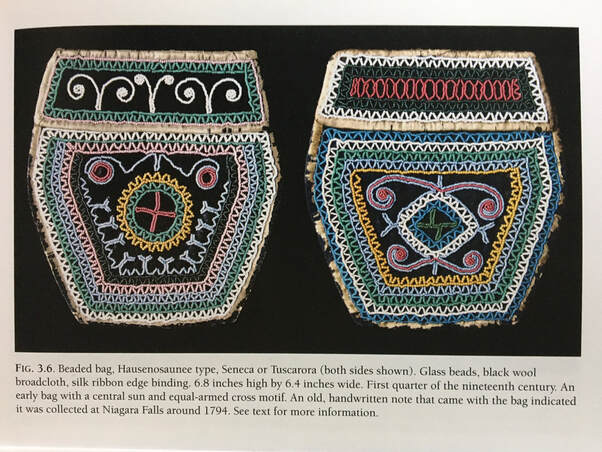Beaded Beauty
Early 19th Century
Haudenosaunee Women's Bags
Online show and essay
|
With loss of traditional lifeways and the influx of trade goods, missionaries and monetary currency at the end of the 18th century, Native American artists responded by creating original art products for their own people and for the Euro-American market. Often made for the market and to be part of a woman’s ensemble, these bags have generally not received their artistic recognition, possibly because they do not connote the cultural stereotypes that persist to this day of the ‘Indian warrior’. Yet for those of us who respond to the Native American art that was made in the context of cultural conflict, these art objects capture the dynamic beauty that the artists created in their own time of cultural chaos. There is no recorded date when the Haudenosaunee women began to make the cloth beaded bags that were sold throughout the 19th century and into the 20th. There are extant examples similar in form that are made of hide and decorated with quillwork which suggests that the style and use of these bags pre-dates Euro-American influence. The earliest known example, published in Gerry Biron’s landmark study, A CHERISHED CURIOSITY, The Souvenir Beaded Bag in Historic Haudenosaunee (Iroquois Art", was reportedly collected in 1794 (see image below online exhibition). |
|
After the American Revolution, the traditional way of life for the Haudenosaunee was dramatically changed as the Haudenosaunee had backed the British in the War which for them resulted in significant loss of land and power. The mighty Iroquois Confederacy was defanged. The missionaries were coming in. The traders were bringing beads and cloth, among other things. Even the name they were known by at that time, ‘Iroquois’, a French version of the Algonquin word for rattlesnake, was a consequence of being on the losing side of the war. The Algonquin and the Haudenosaunee were traditional enemies. Haudenosaunee translates as ‘Six Tribes’. At the beginning of the 19th century, bags like these began to be sold at Niagara Falls. Contemporary accounts indicate that as early as 1780, the Haudenosaunee were selling moccasins to visitors to their reserve. The production of the beadwork for sale was a natural outgrowth of this development. Throughout America during the 19th Century, after the displacement of the traditional life and removal from traditional land, there followed a burst of creativity in the traditional arts that was transformed by new art supplies and a new way of life. As always and throughout all societies, the artists manifested the changes in society. The new reality also necessitated the income the sale of these bags provided. |
|
Niagara Falls was the premier tourist destination of 19th Century America and the purchase of an ‘Indian curiosity’ was deemed a requisite part of the experience. Coincidentally, Victorian beaded purses were also a necessary fashion accessory of the era. One of the examples here has a Victorian-era clasp and chain attached. Rather than being influenced by Victorian tastes and fashions, the indigenous artists remained true to their own motifs and design elements, creating work both beautiful and expressive of their world view. It is this blend of art supplies from the old world transformed by indigenous motifs and creativity that yielded the hybrid form that was readily sought after in the marketplace, yet remained true to the Native aesthetic.
Later in the 19th century, the uniqueness of the form became formulaic but in the first part of the 19th century, these bags exhibited an integrity essential to the traditional arts. The design elements in the bags often feature traditional motifs that pre-date the arrival of the Euro-Americans. The use of the double scroll motif is seen in prehistoric petroglyph sites drawn by the Mi’kmaq. This was later adopted by their Haudenosaunee neighbors but long before these bags were made. Gerry Biron states that some of the recurring abstract motifs reference Haudenosaunee creation myths (p.41). Other design elements reference celestial motifs and medicinal plants. Throughout North America, design motifs communicate tribal identity and these bags, essentially Haudenosaunee in their design and original use, capture a cultural era. John Molloy |
The earliest known Haudenosaunee beaded bag example, reportedly collected in 1794,
was published in Gerry Biron’s landmark study,
"A CHERISHED CURIOSITY; The Souvenir Beaded Bag in Historic Haudenosaunee (Iroquois) Art"
(below).
was published in Gerry Biron’s landmark study,
"A CHERISHED CURIOSITY; The Souvenir Beaded Bag in Historic Haudenosaunee (Iroquois) Art"
(below).

